Galapagos. West of Puerto Villamil, in the south of Isla Isabela, a dirt road of about six kilometers leads to the historic site of "Muro de las Lagrimas". The "Wall of Tears" is a reminder of Isla Isabela's history as a former penal colony. The way there leads through the "Humedales" – the wetlands – with several worthwhile stops, such as beaches, mangroves and viewpoints. Maybe the one or other giant tortoise will cross your path.
Find out what there is to discover on the way to Muro de Las Lagrimas on Isabela and why you should definitely go by bike. Moreover, you will find many practical tips for your bike tour on your own.
Unassigned, unpaid advertising. The article contains affiliate links.
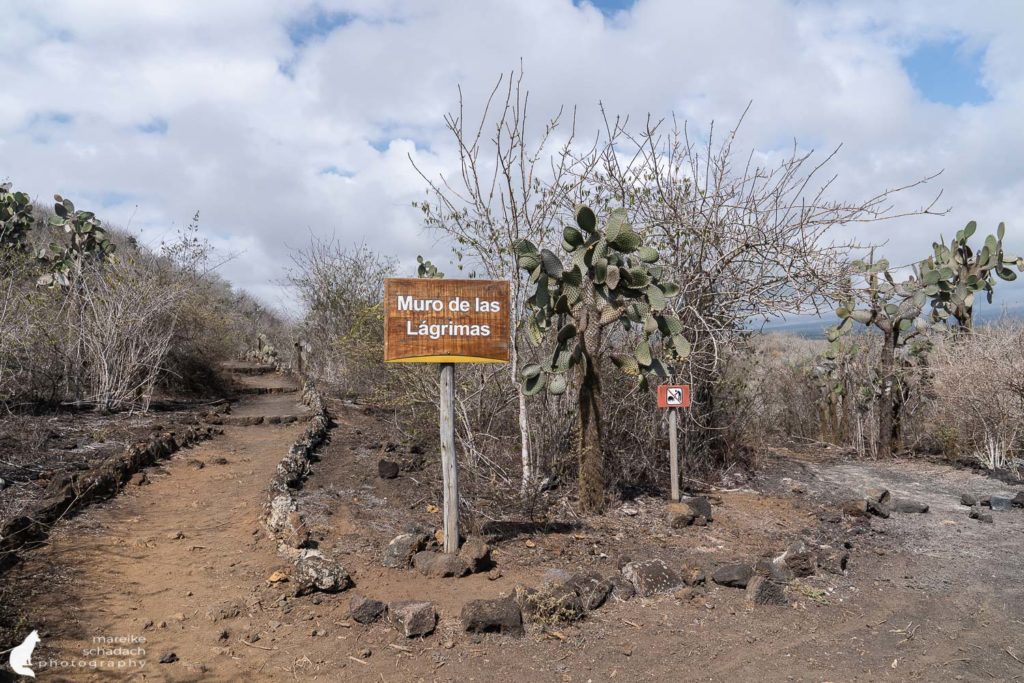
At a Glance
- Length: about 6 kilometers (one way)
- Duration: at least 5 hours (with bike)
- Cost: about $10 for a rental bike for 5 hours
- Highlights: Muro de las Lagrimas, viewpoints, tortoises, mangroves, iguanas, birds, beaches.
- Take along: Drinking water, provisions, sunscreen, swimwear.
The Way to Los Humedales and to the Muro de las Lagrimas
To get to the gravel road to the Muro de las Lagrimas, follow the road that runs parallel to the beach to the west. Keep left at the turnoff and you will reach an area called Los Humedales. Here, a large sign with the inscription "Complejo de Humedales y Muro de las Lágrimas" (Wetlands Complex & the Wall of Tears) informs you about the route. You can take a picture of the map to keep track of the route. The path is easy to follow and each stop worth seeing is signposted.

At first, the path is rather flat, but some sections with loose sand force you to push your bike. Later, the path is better to cycle, but then it's also constantly slightly uphill.
Tip: Start your tour to the Muro de Las Lagrimas as early as possible and cycle to the end of the route without stopping. It can get very hot on the way. On the way back you will have several stops where you can even swim.
Memorial Place "Muro de Las Lagrimas
Isla Isabela was not always the paradise we see today. In the years 1949 to 1959 there was a penal camp here. The inmates of the camp were forced to build a 25 meter high wall made of lava stones. I hardly dare to imagine the conditions under which they did this. Touch the lava stones, how sharp-edged they are!
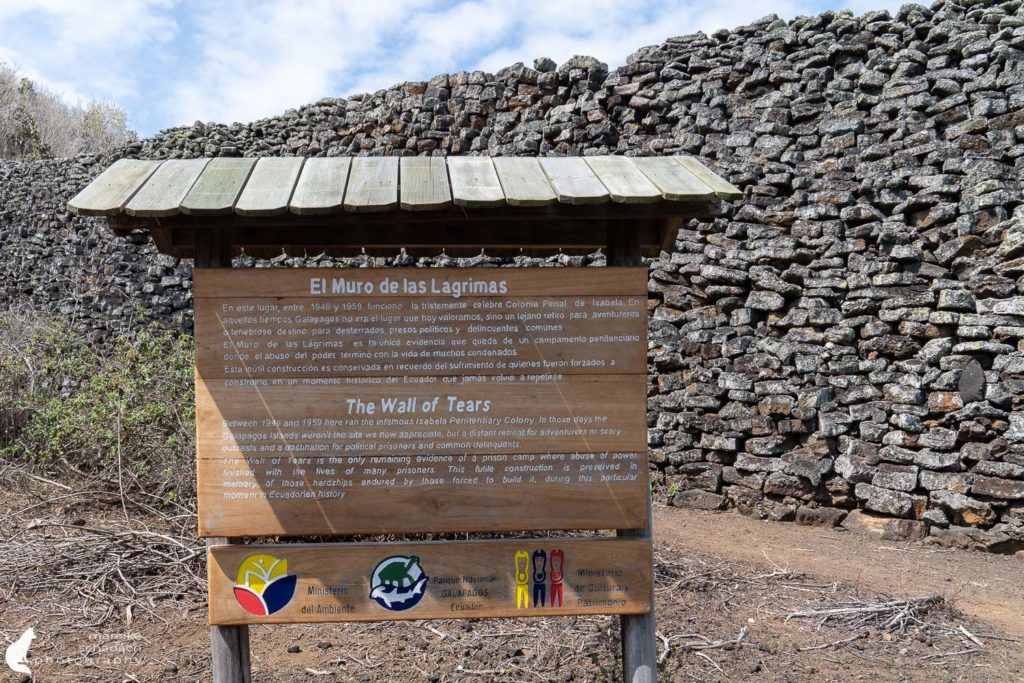
A section of the wall, about 100 meters long, is preserved to this day and commemorates the inmates of the penal colony who died here. The wall is said to have received its name from the locals who could hear the crying of the convicts.
Behind the wall, a shady picnic area invites you to spend some contemplative time. Take some time here and let this place of Isla Isabela's darker history sink in.
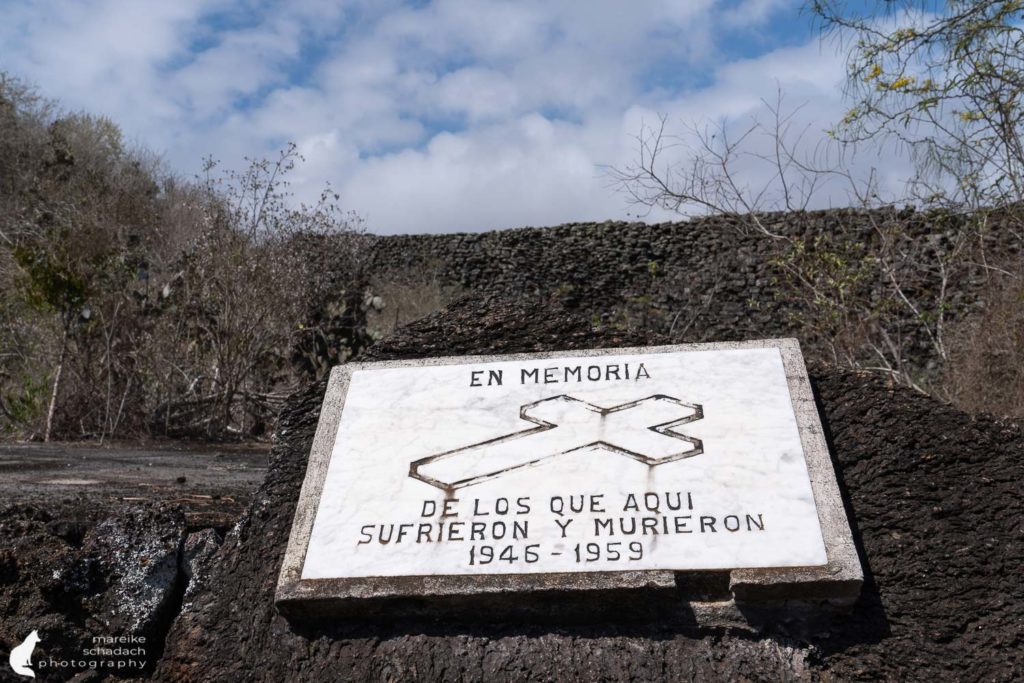
Viewpoint at the old Radar Station and Mirador Cerro Orchilla
Next to the Muro de Las Lagrimas begins the climb to a lookout point. Here the Americans once operated a radar station. Today only the foundation can be seen and a panel informs about the place.
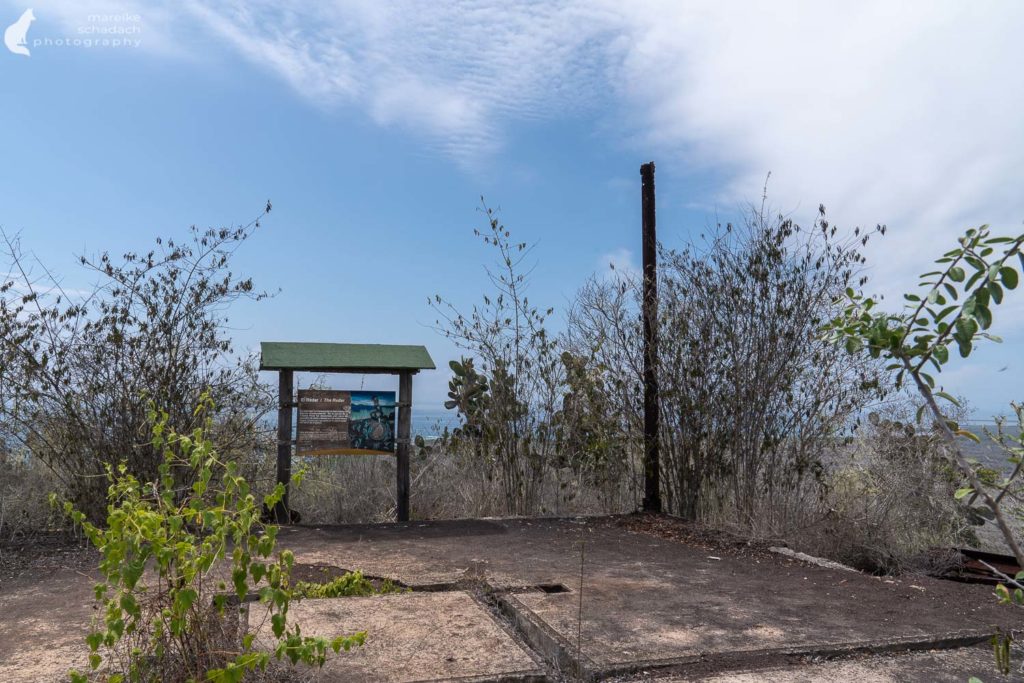
From the top you have a fantastic view over the Humedales and the beach to Puerto Villamil. The path is lined with Galápagos prickly pear cactus and bare trees with Spanish moss hanging from their branches. These give the path something mystical and are just beautiful to look at.



Another viewpoint that is not quite as high is the Mirador Cerro Orchilla. It is located about 900 meters before the Muro de las Lagrimas. We didn't climb it for time reasons, because we still had to catch our boat to Santa Cruz after noon.

You are still looking for an accommodation in Puerto Villamil? I can highly recommend Hospedaje Mother Fanny*. It is simple, centrally located, quiet and very inexpensive.
Ruta de las Tortugas
With a little luck you will see giant tortoises on the way to Muro de las Lagrimas. We saw a total of nine pretty big animals on the way there and back. Sometimes closer to the path, sometimes more hidden. One tortoise was even right at a picnic spot.

Many of the tortoises here are from a reintroduction projectto stabilize the population on Isabella. You can even visit the breeding center. It is only a few minutes walk from the center of Puerto Villamil.
More about giant tortoises:
Tortoises in Galapagos - Where is the best place to see them?
The Giants of Galapagos – Visit to the Tortoises of San Christóbal
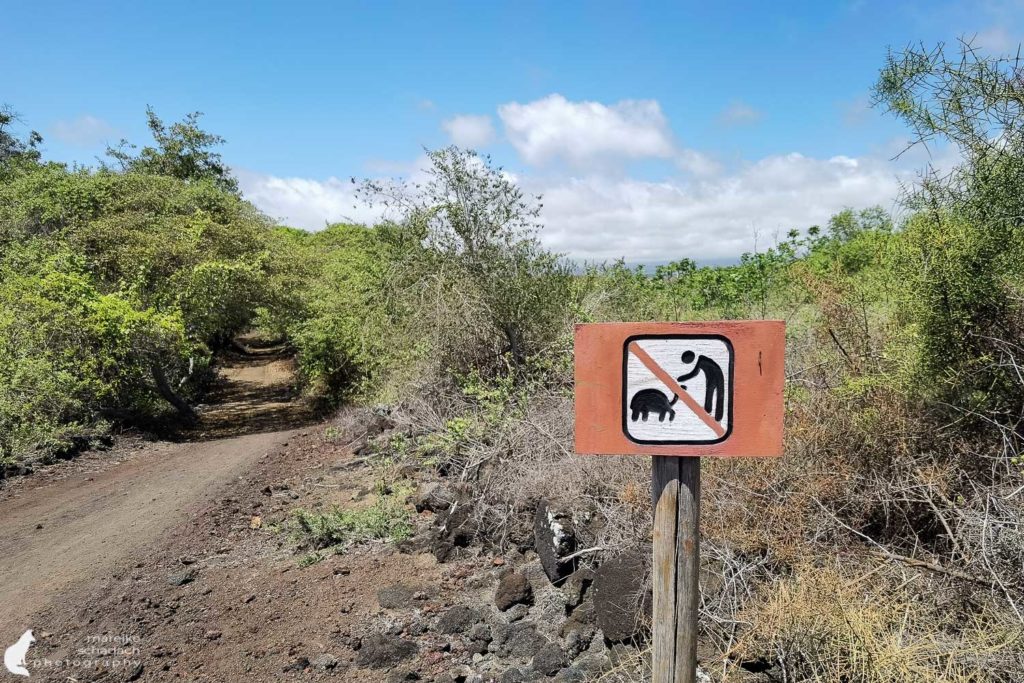
Tip: There is no water on the way. Take at least 1.5 liters per person. Don't forget sunscreen and head cover.
El Estero - picturesque Bay with Mangroves
At "El Estero" a longer stopover is worthwhile. From the bicycle parking lot a small path leads through a tunnel of mangrove trees. It ends at a picturesque little bay, which is surrounded by mangroves. Along the path you will see all four types of mangroves found in Galapagos. Mangroves play an extremely important role in Galapagos, as they are the nursery for many marine animals as well as nesting sites for many birds. The sand in the bay is super fine, the water turquoise and pleasantly warm. A great shady spot for a cool down or a picnic.
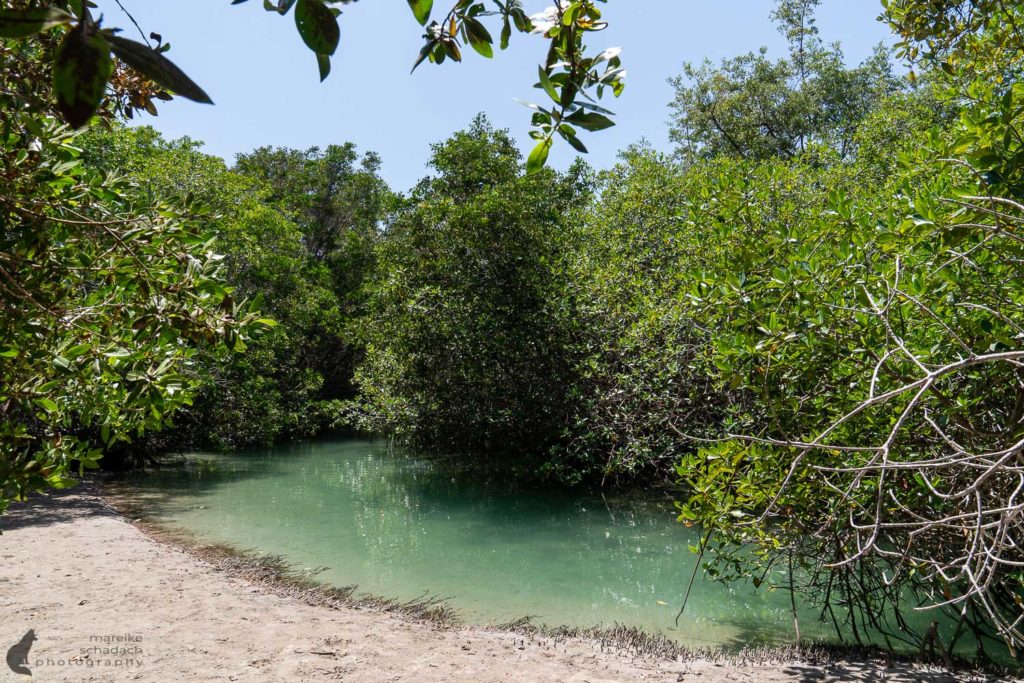
A bit before the mangrove tunnel, another path branches off towards the sea. At low tide you will come to a beautiful coastal section of lava rocks, sand and mangroves. Also the iguanas seem to like this place. Next to it you can see crabs and various seabirds.


Sandals, outdoor towels, sun hats and everything else you might need for your bike tour to Muro de las Lagrimas on Isla Isabela can be found at Bergzeit.
Lava Tunnel "Tunel de Estero"
Only a few meters from the bicycle parking lot, you will come to a small lava tunnel. While hot lava was flowing here towards the sea, the surface of the lava flow cooled down and became hard. The hot lava inside continued to flow and a tunnel was formed. At the bottom there is some water, depending on the tide. On the ceiling you can see how the cooling lava has formed small drop-shaped stalactites.

Playa del Amor (Love Beach)
Really a beach to fall in love with. The sand is not as fine as in front of Puerto Villamil, but the beach is especially beautiful. The black lava rocks form a protected bay, mangroves grow in the background and cacti and succulents grow on the wide golden sandy area. But it is better not to walk over it, because the area is also the nesting area of the iguanas. By the way, these are to be seen here quite numerously on the rocks, among them many of the big, colorful males.

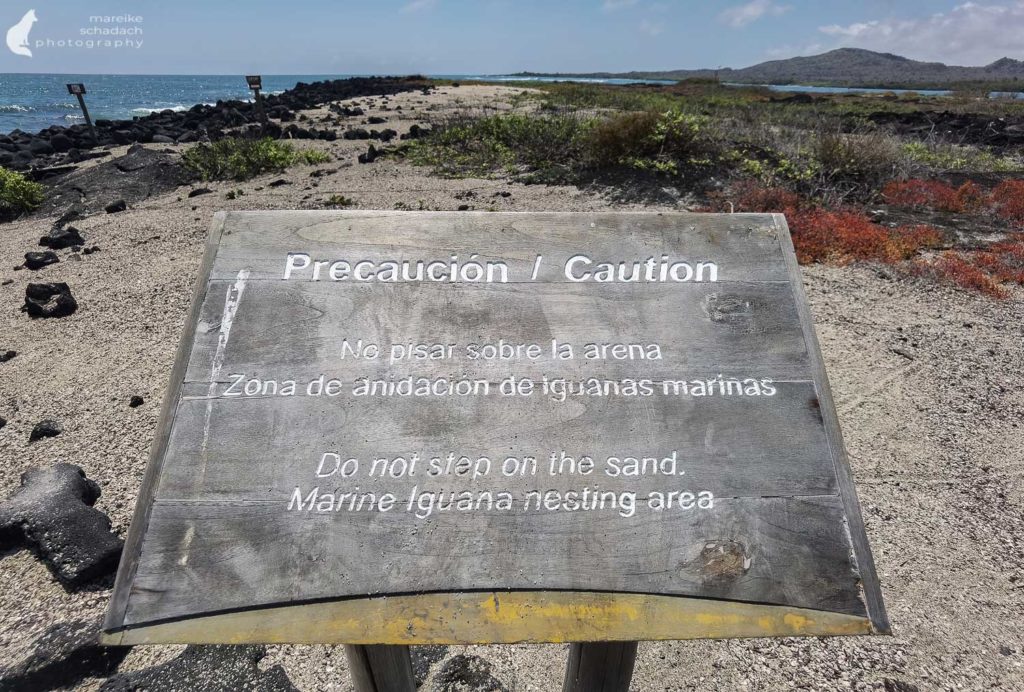
Humedales – Wetlands and Bird Paradise
On the inland side of the bike path there are other worthwhile stops, such as the Pozas Verde or the viewpoint. From here you have a good view of the ponds of the Humedales and with a little luck you can observe different birds. The most prominent are the pink flamingos. But also smaller birds, like the curlew, the plover or various ducks can be observed here.
TIP: A trip to the Humedales is especially beautiful if you also see birds. It is best to take binoculars with you, such as the handy and even waterproof Zeiss Terra ED 8×42**.

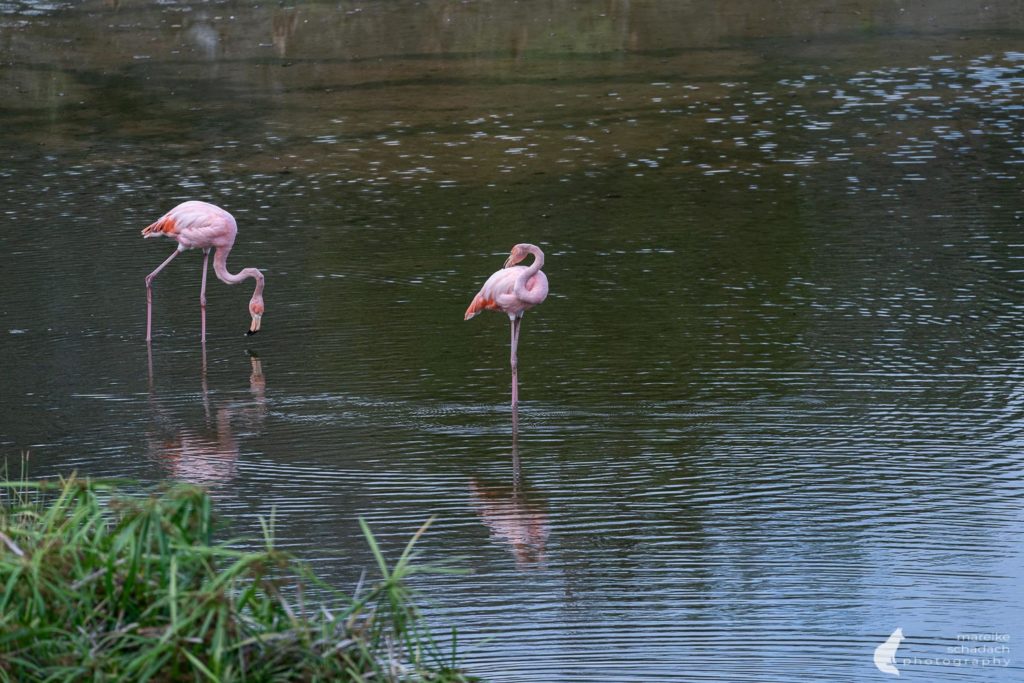
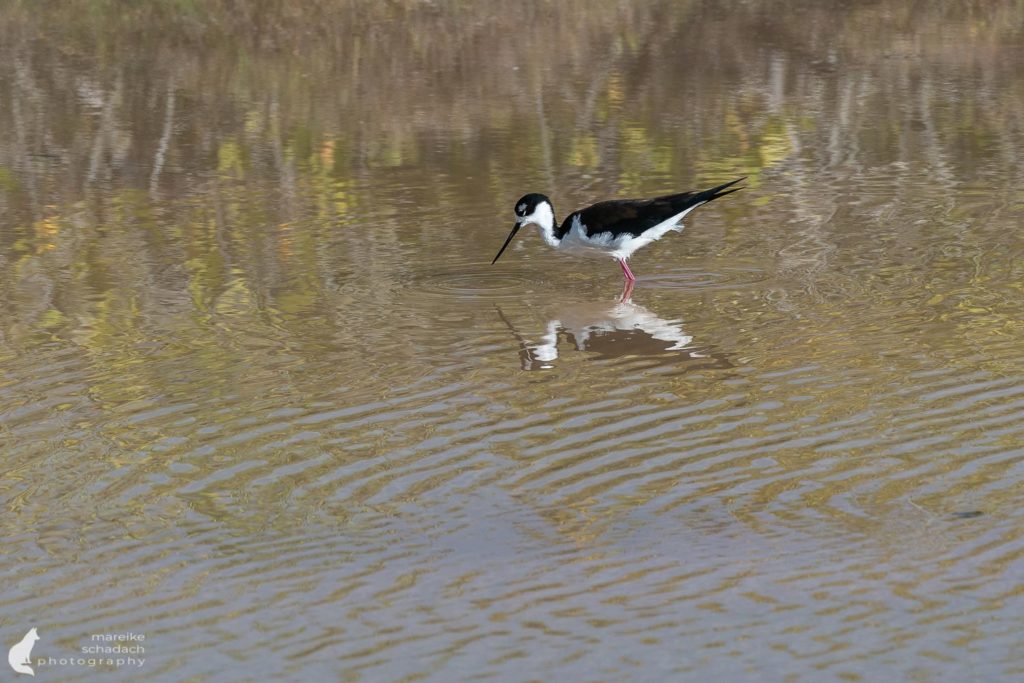

Why by Bike?
In Puerto Villamil you can rent a bike at almost every corner. Mostly they are mountain bikes. We paid 10 US dollars for five hours. Make sure that the brakes work well, because on the way back it goes downhill.
I recommend renting the bike for at least five hours. That sounds a lot at first, but there is also a lot to see on the route. I would have loved to stay longer
Why you should definitely go by bike? The route is quite long, about twelve kilometers round trip, and can be a bit monotonous between stops. You'll get from one stop to the next much faster by bike. And on the way back, when it's approaching the hot noon time, you can enjoy the downhill wind.
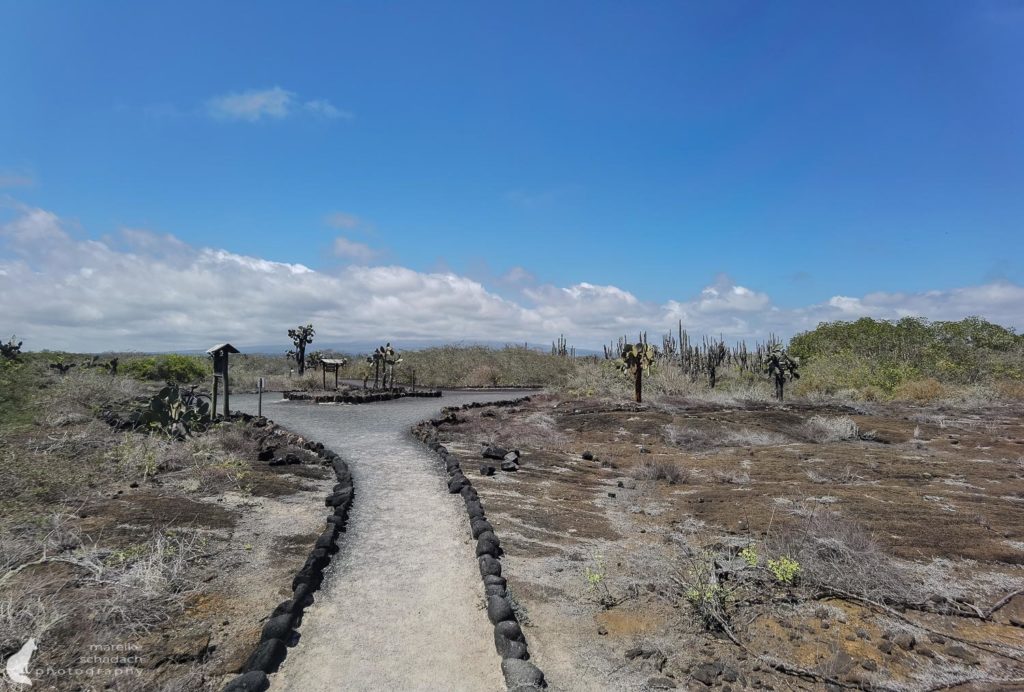
Book Recommendations for Galapagos
You want to know where the journey goes? Then I can recommend these books*.
You can order the travel guides on Amazon by clicking on the pictures. If you buy a product via an affiliate link, I get a small commission, and you help me to keep filling Fernweh-Motive with interesting articles. The product will not be more expensive for you, and you will do me a huge favor.
Have you ever been to the Galapagos Island Isabela, maybe even to the Muro de las Lagrimas? How did you like it? Do you have any questions about my article? If yes, then write me a comment!
Do you want to know when there are new articles on my blog? Then follow me on Facebook, Pinterest or Instagram. I would also be very happy if you share my article with your friends.
Recommendations for further Reading
Do you love wildlife as much as I do? Then you might also be interested in my articles about the King Penguins of Tierra del Fuego or Diving with Sea Lions near La Paz, Mexico.

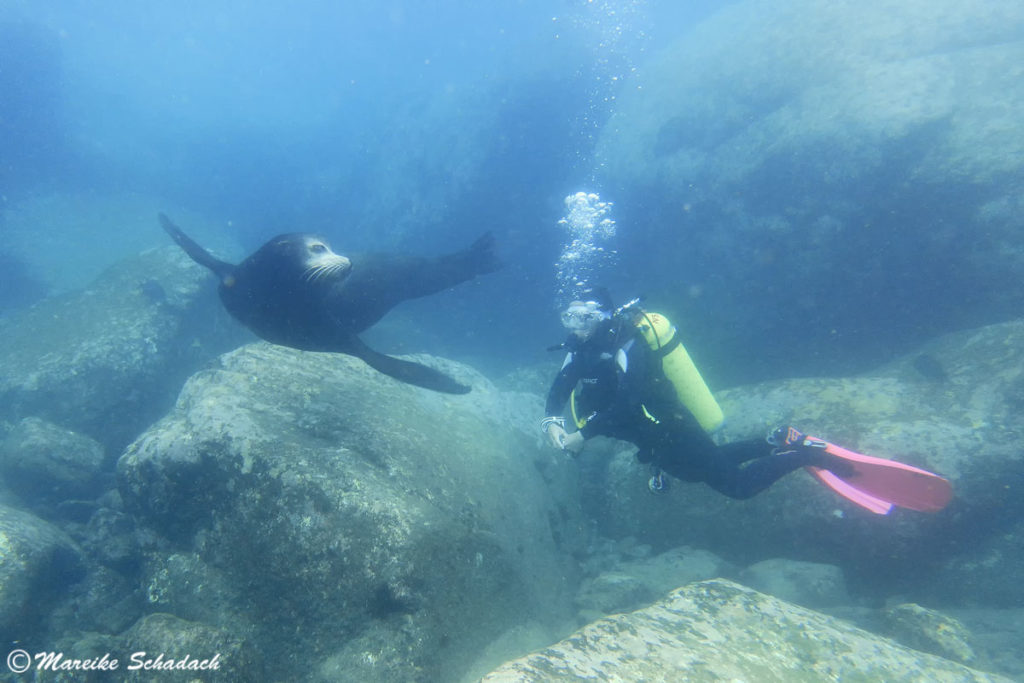
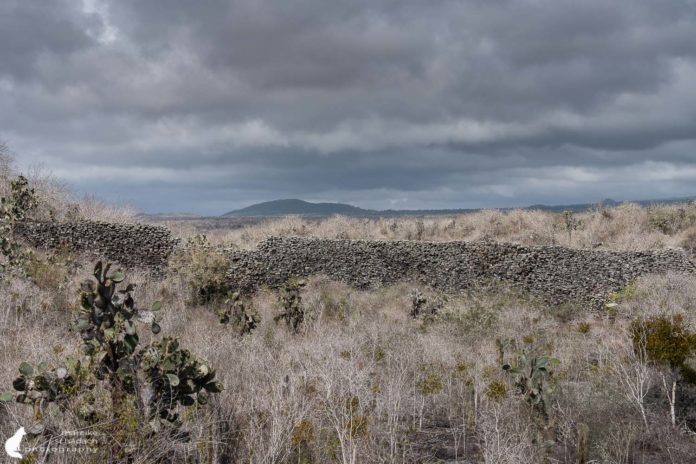









Ganz toller Bericht mit schönen Fotos. Wir werden es nie dorthin schaffen, weil wir gerne mit dem Wohnmobil in Europa und den angrenzenden Ländern unterwegs sind. Aber Reiseberichte lesen macht mir trotzdem viel Spaß.
Ganz lieben Dank für Dein Feedback, Jochen. Und wer weiß, das Leben hat manchmal die ein oder andere Überraschung parat.